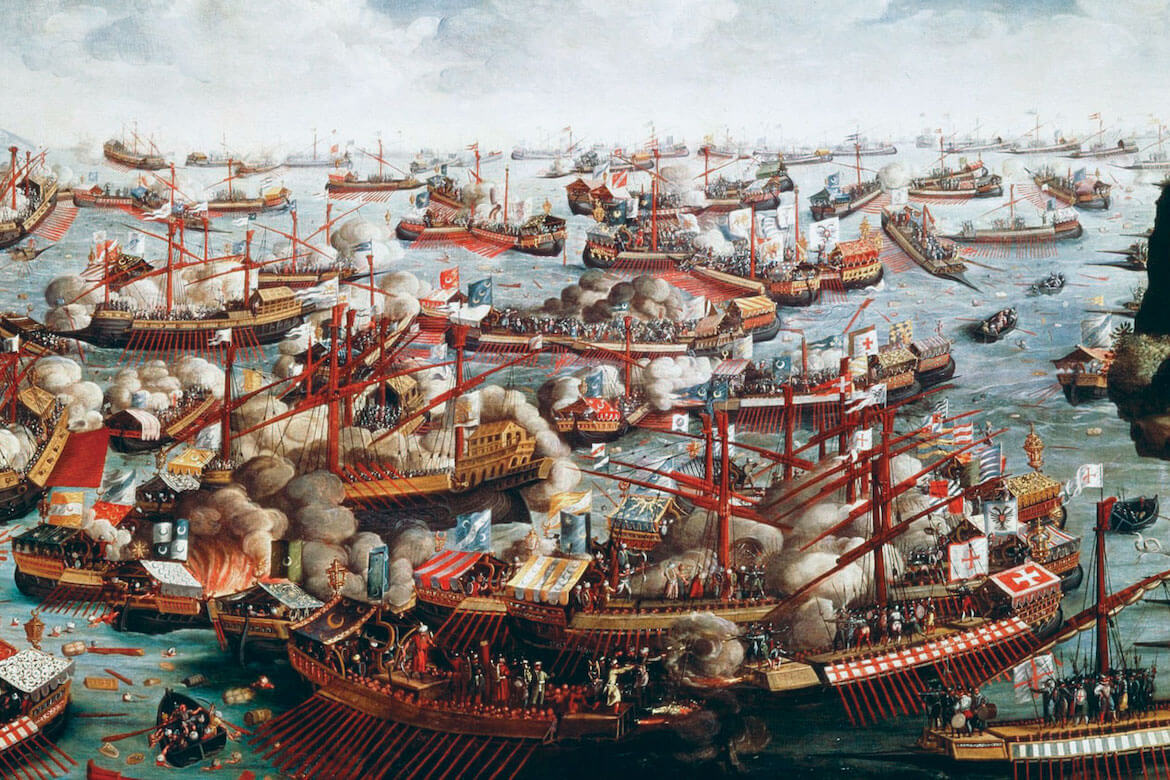On October 7, 1571, one of the most important naval battles in history took place off the west coast of Greece between Christian coalition and Ottoman Turkish forces.
Ottoman forces collided with the fleet of the Holy League — a coalition of Catholic states including Spain and most of Italy — in the gulf of Patras after having set sail westward from their station in Lepanto (the Venetian name for Nafpaktos).
More than 30,000 Muslim Turks and 8,000 Christians died in the conflict, which would remain the bloodiest until World War I. The Battle of Lepanto was the largest in Western history since classical antiquity, involving more than 400 warships.
The Holy League’s victory marked the first significant conquest for a Christian naval force over a Turkish fleet. The battle was also the last major engagement in the Western world to be fought almost entirely between rowing vessels, namely the galleys and galleasses which were direct descendants of ancient trireme warships and carried large groups of infantry.
Conflicts between Muslims and Christians had been ongoing since the emergence of Islam in the mid-sixth century which saw Christian capitals in the Middle East fall.
The Muslims had even expanded their reach across northern Africa and into the majority of the Iberian peninsula — Spain and Portgual — before the Catholics embarked on the centuries-long “Reconquista,” or reconquest, which culminated with the fall of the Nasrid kingdom of Granada in 1492.
But in the 16th century, the Ottoman Empire was on the offensive and gaining ground in Eastern Europe, prompting Pope Pius V to create the Holy League and assemble a counter fleet.
The Holy League had a fleet of 316 vessels and included forces from the Republic of Venice, the Papacy, the Kingdom of Spain and the Republic of Genoa.
In the Battle of Lepanto, the league, led by commander Don Juan of Austria, faced a Turkish fleet of 245 ships. The Christian fleet successfully deployed the latest technological weapon – the galleass – a high-sided sailing vessel which carried more cannons, giving them a firepower advantage.
Don Juan turned the Turks back, smashing their fleet by sinking enemy galleys before soldiers on board could enter the fight.
The Battle of Lepanto destroyed the myth of Turkish invincibility created earlier by Suleiman the Magnificent who reigned from 1520 to 1566. The Ottoman defeat also set the stage for the empire’s ensuing decline and eventual collapse centuries later after the First Wold War and Balkan Wars.
Is The Pappas Post worth $5 a month for all of the content you read? On any given month, we publish dozens of articles that educate, inform, entertain, inspire and enrich thousands who read The Pappas Post. I’m asking those who frequent the site to chip in and help keep the quality of our content high — and free. Click here and start your monthly or annual support today. If you choose to pay (a) $5/month or more or (b) $50/year or more then you will be able to browse our site completely ad-free!

Click here if you would like to subscribe to The Pappas Post Weekly News Update
